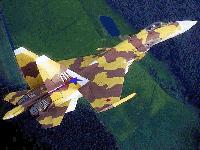
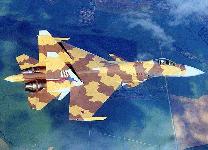

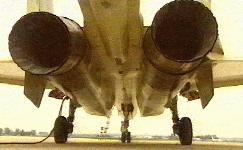
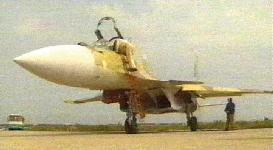
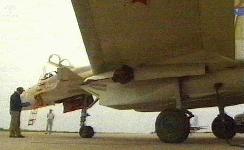
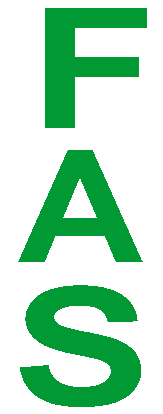



The Su-37 has a variety of other innovative equipment such as a radar configured for simultaneous surveillance of airspace and the ground and a high-precision laser-inertial/satellite navigation system. The all-weather digital multi-mode phased array radar operates in either air and ground surveillance modes or in both modes simultaneously. Ground surveillance modes include mapping (with Doppler beam sharpening), search-and-track of moving targets, synthetic aperature radar and terrain avoidance. The Su-37 is also equipped with a rearward facing radar in the tail stinger area of the fuselage. The Su-37 features fly-by-wire and relaxed static instability, which along with 3D thrust vectoring give the aircraft tremendous agility. It incorporates state of the art ECM in wing-tip pods, allowing improved survivability in electronic warfare environments. The Su-37 can carry air-to-air and air-to-surface weapons on 12 stations. The number of missiles and bombs carried can be increased to 14 with the use of multi-payload racks.
Sukhoi used payments earned in the sale of an Su-27 license to China to finance the Su-37 development. Russia's Air Force has not ordered any Su-37s. Sukhoi is studying the possibility of developing a two-seat version of the Su-37 with enhanced strike capabilities.
Specifications | |
| Country of Origin | Russia |
| Builder | Sukhoi |
| Role | Multi-role fighter |
| Similar Aircraft | |
| Wing Span | 15.16 m / 49 ft 9 in |
| Length | 21.94 m / 72 ft |
| Height | 6.84 m / 22 ft 5 in |
| Weight | 40,565 lb empty / 74,956 lb max. take off |
| Engine | Two Lyulka AL-37FU vectored-thrust afterburning turbofans, 30,855 lb thrust each |
| Maximum speed | 2,440 km/h / 1,516 mph |
| Cruising speed | |
| Range | 3,500 km / 2,175 miles |
| Service Ceiling | 59,000 ft |
| Armament | One GSh-30-1 30mm cannon, plus up to 18,075 lb including R-73/R-77 AAMs, ASMs, bombs, rockets, drop tanks, and ECM pods carried on fourteen external points |
| Crew | 1 |
| Cost | |
| User Countries | under development for Russia |





